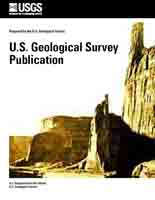Potassium-argon ages from the Mount Taylor Volcanic Field, New Mexico
Links
- Document: Report
- Larger Work: This publication is Chapter B of Shorter contributions to mineralogy and petrology, 1979
- Download citation as: RIS | Dublin Core
Abstract
Fourteen new K-Ar dates for volcanic rocks of the Mount Taylor field, New Mexico, indicate that most activity occurred between 4.3 and 1.5 m.y. (million years) ago. Peak activity was at about 3.0-2.5 m.y., both on the central andesite-rhyolite shield volcano and on the surrounding alkali basalt-trachyte volcanic plateau, and occurred concurrently with an episode of NNE-trending basin-range faulting. The K-Ar dates also indicate that the regional Ortiz pediment surface, graded to the ancestral Rio Grande, existed in the Mount Taylor area as recently as 3 m.y. ago and that 250-400 m of erosional downcutting has occurred in subsequent time. Growth of the Mount Taylor field was also concurrent with peak volcanic activity along the northeast-trending Springerville-Raton zone, a major late Cenozoic volcanic belt that is considered to reflect the presence of a regional structural discontinuity of Precambrian age in the North American craton.
Study Area
| Publication type | Report |
|---|---|
| Publication Subtype | USGS Numbered Series |
| Title | Potassium-argon ages from the Mount Taylor Volcanic Field, New Mexico |
| Series title | Professional Paper |
| Series number | 1124 |
| Chapter | B |
| DOI | 10.3133/pp1124B |
| Year Published | 1980 |
| Language | English |
| Publisher | U.S. Geological Survey |
| Contributing office(s) | Volcano Science Center |
| Description | iii, 8 p. |
| Larger Work Type | Report |
| Larger Work Subtype | USGS Numbered Series |
| Larger Work Title | Shorter contributions to mineralogy and petrology, 1979 |
| Country | United States |
| State | New Mexico |
| Other Geospatial | Mount Taylor Volcanic Field |


